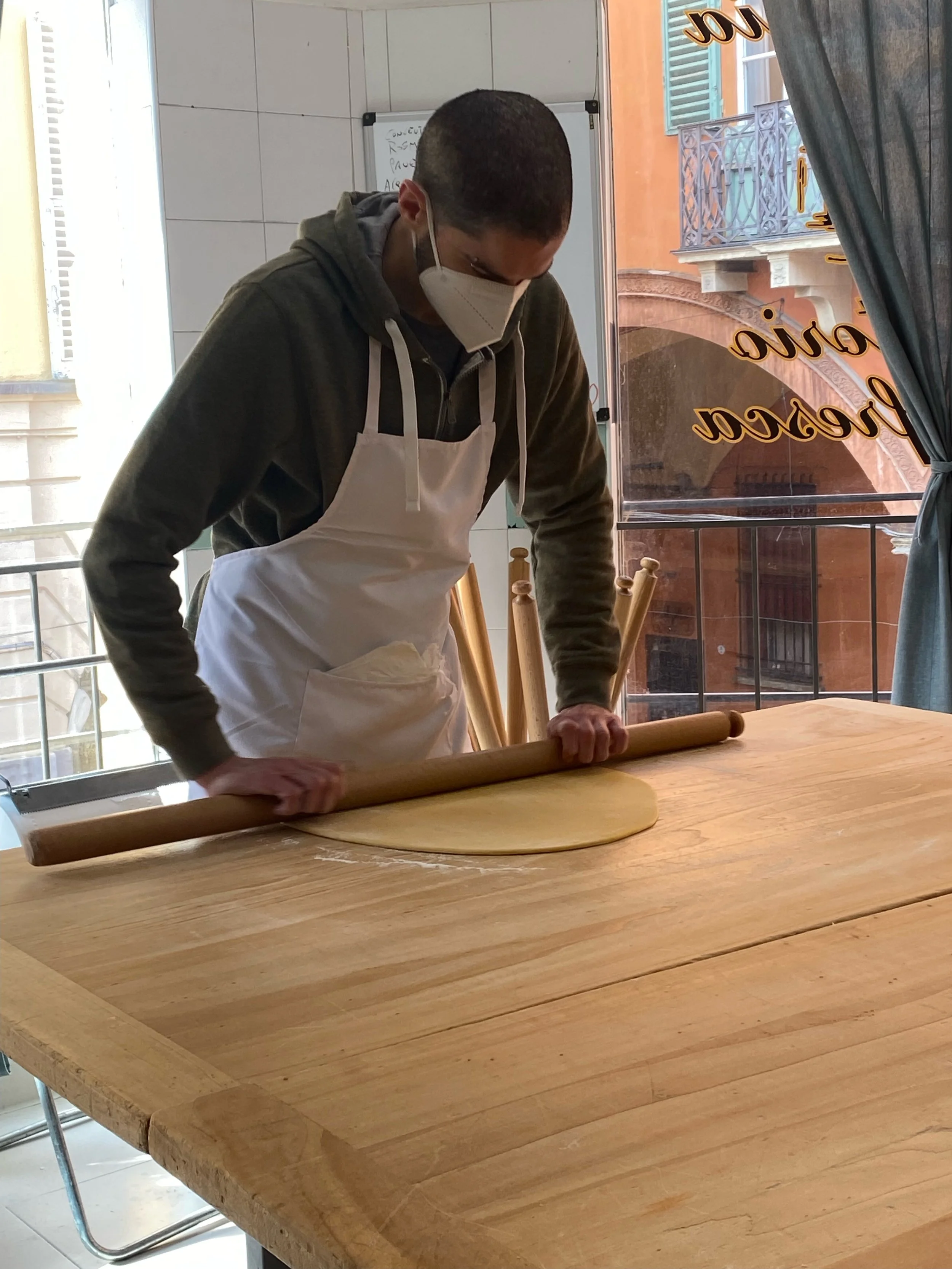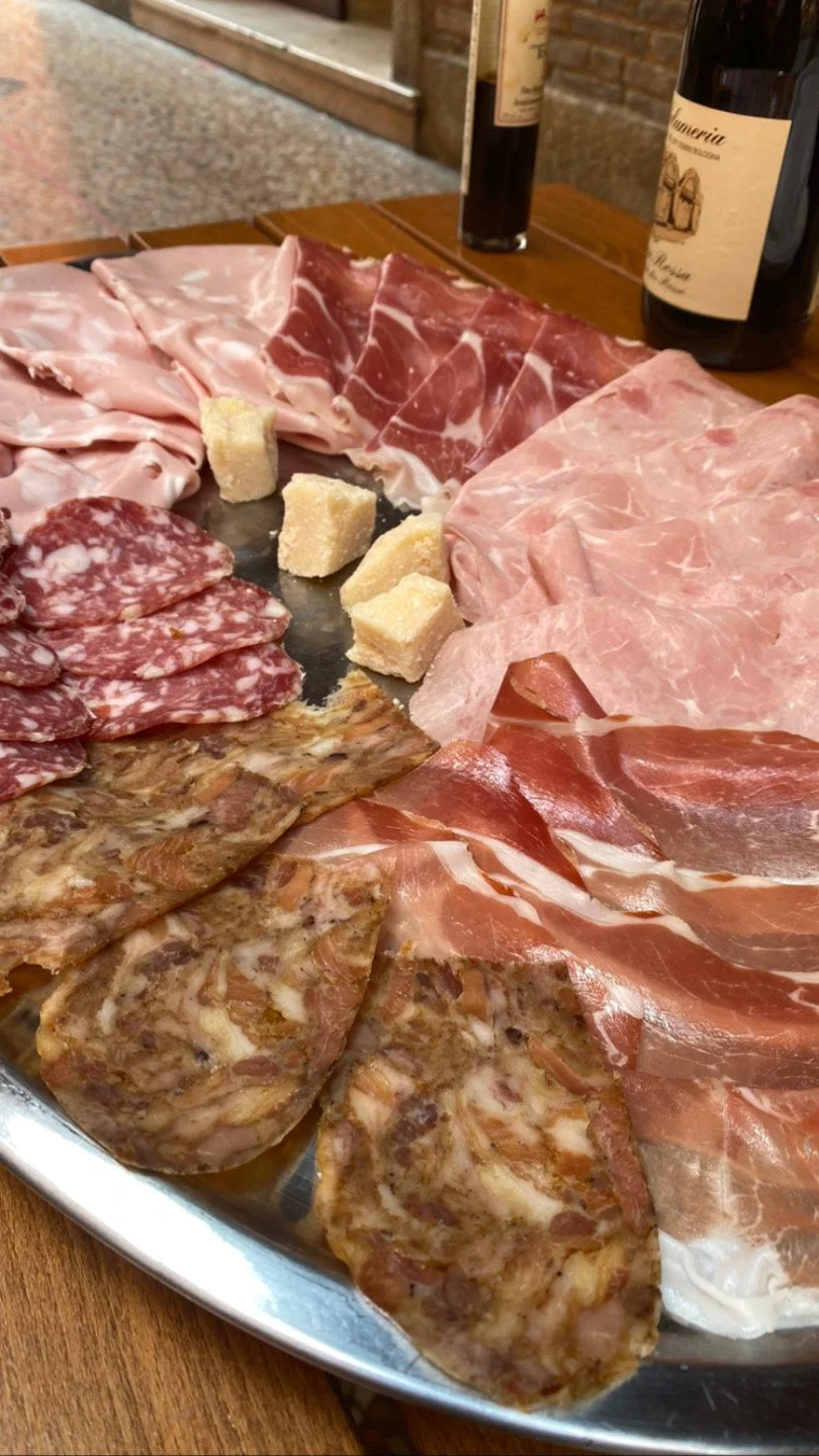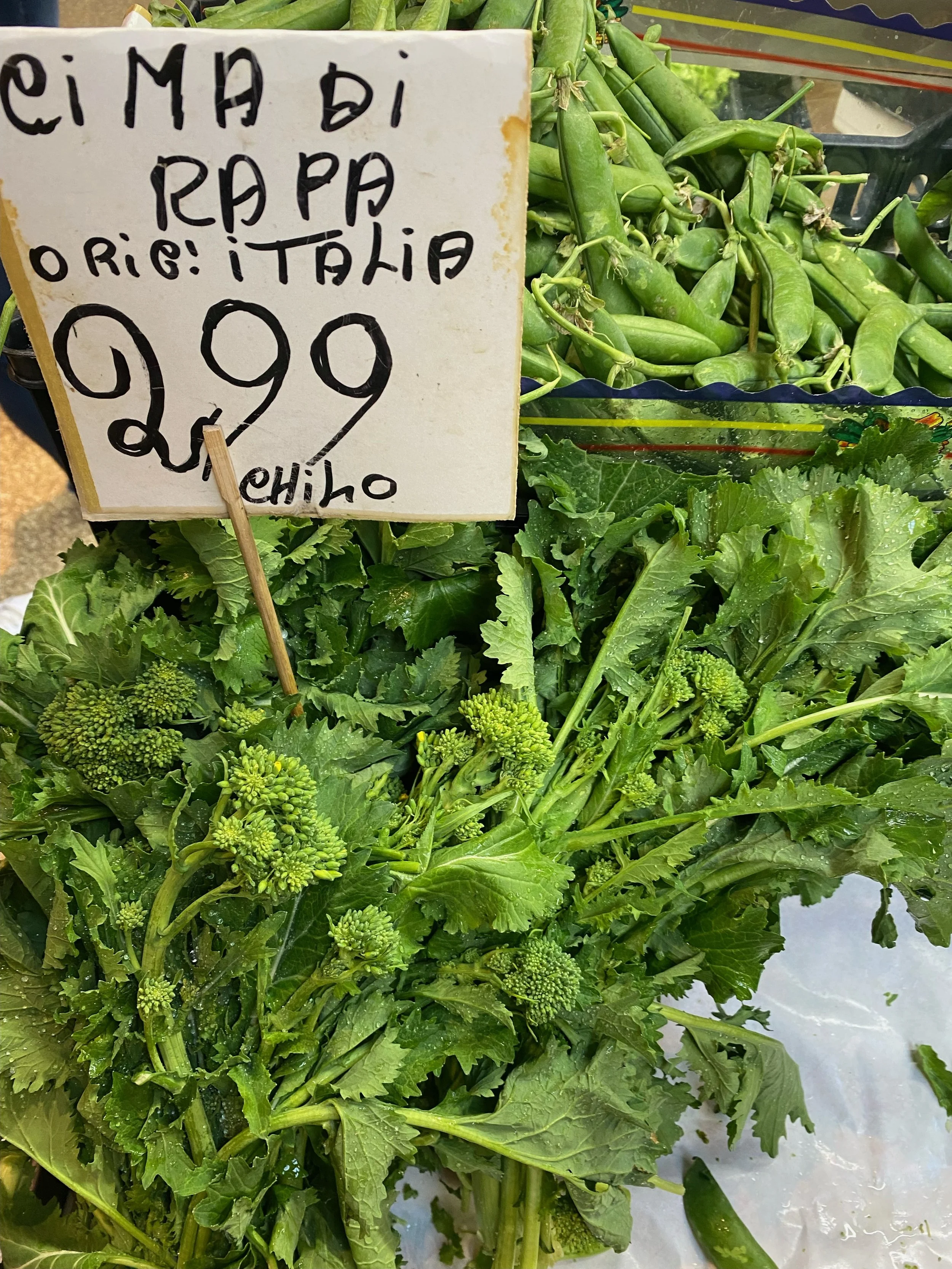Bologna Food Tour
Bologna is known as La Grassa - “the fat one,” and its region, Emilia-Romagna, is where all the stuff you think of when you think of Italian food comes from: Parmigiano-Reggiano cheese, balsamic vinegar, prosciutto di Parma, tortellini, ‘bolognese’ sauce which here is called simply ragu, Lambrusco, the fizzy red wine which has a bad rap in the States because as my tour guide said “we only exported the bad stuff and kept the good for us here.” But it is so delicious to cut the fat of cured meats and there are many.
For my first full day here, I booked a four hour walking food tour with Mattia of Delicious Bologna to get a lay of the land. Mattia did a great job weaving some local lore and history of the city in with the food stops.
Sfogline:
or those who make the ‘sheet’ - foglia - of the egg + flour pasta of Emilia-Romagna. We visited a pasta workshop where they were making the pork-filled pasta for tortellini in brodo. Mattia explained that tortellini can ONLY have a pork filling. Tortelloni, the big ones, can have other fillings.
The sfogline worked so methodically pulling tiny bits of the filling and daubing them down each row. And then their folding of the pasta into the knot shape was done like a snap of the fingers. It was a mesmerizing process to watch, but I learned from my pasta class at Vecchia Scuola Bolognese how difficult it is.
Rolling with a mattarello
I thought I’d “made pasta” at home with my KitchenAid stand mixer pasta attachments. However, to get the full gustatory experience, the pasta must be made by hand, rolling with a long skinny pin called a mattarello. Machine-made pasta becomes too uniform, so the sauces don’t cling as well.
At my pasta class I got the chance to wield a mattarello and make tortellini (pork filling only!), tortelloni with a ricotta filling, and tagliatelle. The class was so great - learned a lot with a couple other students (two of whom were professional chefs doing the three-day pasta course) and got to try what we made and bring the rest home. It was mostly in Italian, so my brain was working overtime.
Our teacher kept telling us to sentite alla sfoglia - listen to the dough and “she will tell you when she’s ready.” A lot more to practice obviously, but I always feel so good after I get into a flow state working with my hands, whether cooking, or gardening, or making art.
Salumi e Formaggio
Cured meats reign supreme here. The deli ‘meat’ we call bologna/baloney is a bastardization of the mortadella of this region (shown in back left of the photo). I couldn’t quite get over the Lunchables consistency, even though the taste was much richer.
You’ve heard of prosciutto di Parma but the so-called king of the meats is culatello di zibello. Mattia explained the difference between DOP and ICG and those other letters you see on Italian food and wines, and I forget the details (google it, who cares) but my major takeaway was to always buy Parmigiano-Reggiano cheese with the rind on, so you can see that it’s stamped as legit. Mattia also said “I don’t know what Parmesan is, but that’s not just a different spelling.”
Tasting the Parmigiano just a stone’s throw from where it’s made was really something. It was so delicately textured. Then Mattia gave us a tasting of various aceti di balsamico, aged at different years. The oldest one was in a specially shaped bottle and was so viscous; it was like a medicinal administration the way we each held up our spoons to receive a few drops. Musty and sweet. Not at all what you would put on salad; I asked him what it’s eaten with and he said “Oh, we just put the bottle on the shelf to show it off.”
verdure
Nothing really here other than some of the first crops of spring; just giving my Reggie’s Veggies stans what they’ve come to expect.



